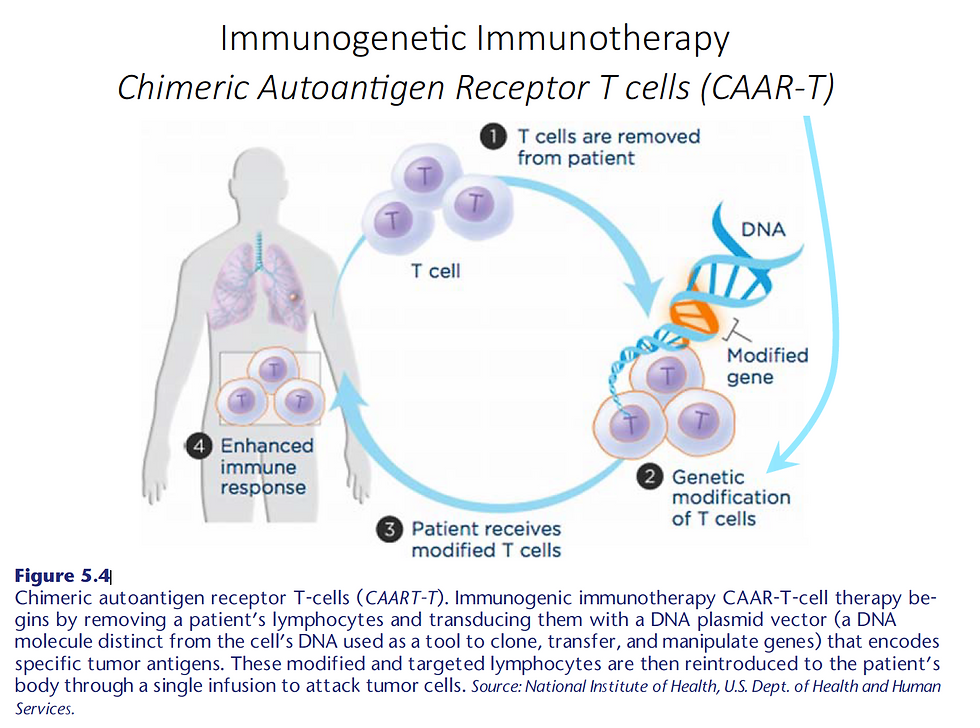(Selected Tables and Figures referenced, but not present in this blog
can be found in their corresponding Science Version blogs)
The word “chimeric” in biology means using two or more biological components linked to form or perform a new biological process. Chimeric antigen receptor T cells (CAR-T cells) are T cells that have been genetically engineered to give them the new ability to target a specific protein. The receptors are “chimeric” meaning they combine both antigen-binding and T-cell activating functions into a single receptor. The initial premise of CAR-T immunotherapy is to modify T cells to recognize cancer cells and thus, more effectively target and destroy them (more on this to be discussed in Blog #27 on cancer). Similar to cancer treatment by targeting tumor-associated antigens expressed on the surface of tumor cells, CAR-T cells are now being modified to treat autoimmune diseases as well by targeting specific autoantigens or antibodies. This type of CAR-T cell immunotherapy is referred to as chimeric autoantibody receptor T or CAAR-T cell and CAR-Treg which chimerically targets Treg cells [from Blog #5] to help regulate and suppress immune activity suspected of producing an autoimmune disease.

CAAR-T-cell immunotherapy (Figure 5.4) begins by removing a patient’s T lymphocytes and transducing or infusing them with a DNA molecule called a plasmid vector, distinct from the cell’s DNA and engineered to include a manipulated or cloned gene sequence or a patient’s stem cells that can be targeted for an autoantigen producing an autoimmune disease. These modifying T cells are then transferred back into the patient’s bloodstream through a single infusion (Fig. 5.4). The modified T lymphocytes begin to enhance the patient’s immune response by targeting the autoantigen protein. Known as autologous CAAR-T-cell therapy, this treatment is showing promising results in numerous autoimmune diseases. A similar process will be presented in Blog #32 on cancer treatment using encoded tumor antigens to elicit a targeted immune response to a cancer. Can you begin to see the potential of this elegant immunotherapeutic strategy?

Comments